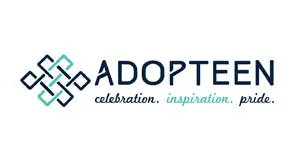- Race Education
“Daddy Why Am I Brown?”: A healthy conversation about skin color and family
This is a children’s book meant to start a conversation about how kids can learn to talk about skin color in a way that’s kind, thoughtful, and healthy. It’s also meant to help children understand the difference between race, ethnicity, and culture.
- Race Education
Resilience – “Reading and RES: Parent Tip Tool: Choosing and Using Books to Discuss Race and Ethnicity”
This brief article explains how reading books with your child is a key way to start and continue conversations about race and ethnicity. It also discusses why books are a good medium, the importance of conversations about race, and tips for how to choose appropriate books for your child.
- Race Education
Beynd the Golden Rule
This illustrated book serves as a parent’s guide to preventing and responding to prejudice. This book explores how to discuss racism and tolerance depending on the age of the child.
- LGBTQ+
University of Michigan Center for Sexuality & Health Disparities: “All About Gender”
From Henry Ford, this guide can apply to and most benefit parents who have transgender, questioning, gender expansive, gender nonconforming, or non-binary kids. The guide explains terms, answers common questions, addresses transitioning, and gives additional resources
- LGBTQ+
PA Parent an Family Alliance
The PA Parent and Family Alliance LGBTQ+ Tip Sheet is a great resource that can most apply to and benefit parents who have a LGBTQ+ child. The guide goes over tips on what to do immediately following your child coming out, how to use terminology, and some reputable resources to continue your research.
- Literature
Attaching in Adoption: Practical Tools for Today’s Parents
This is a comprehensive guide for prospective and current adoptive parents on ways to understand and care for the adopted child and promote healthy attachment. It provides “practical parenting strategies designed to enhance children’s happiness and emotional health” and explains “what attachment is, how grief and trauma can affect children’s emotional development, and how to improve attachment, respect, cooperation and trust”. The listed parenting techniques are “matched to children’s emotional needs and stages, and checklists are included to help parents assess how their child is doing at each developmental stage”. This book covers a wide range of issues including international adoption, Fetal Alcohol Spectrum Disorder, and learning disabilities. It is also geared as an important resource for adopted professionals.
- Literature
The Primal Wound
This book is a “seminal work which revolutionizes the way we think about adoption. It describes and clarifies the effects of separating babies from their birth mothers as a primal loss which affects the relationships of the adopted person throughout life”. This book also discusses pre-and perinatal psychology, attachment, bonding, and loss and gives adoptees, whose pain has long been unacknowledged or misunderstood, validation for their feelings, as well as explanations for their behavior. Additionally, it lists “the coping mechanisms which adoptees use to be able to attach and live in a family to whom they are not related and with whom they have no genetic cues”. The hope is that this book will “contribute to the healing of all members of the adoption triad and will bring understanding and encouragement to anyone who has ever felt abandoned”.


